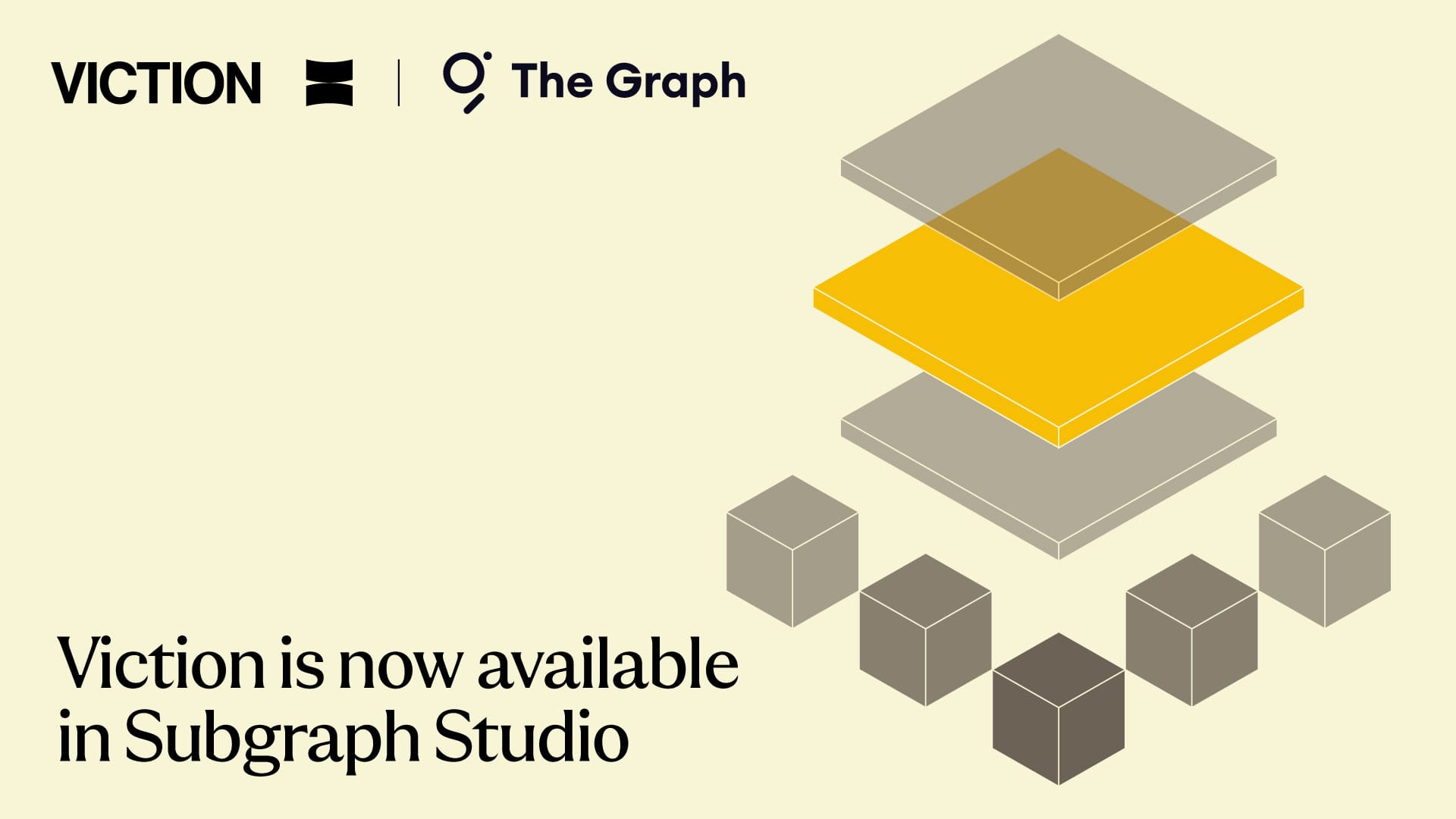Get speedy access to Viction’s indexed data with The Graph

Developers building on Viction can now leverage subgraphs (open APIs) of The Graph to efficiently index blockchain data — delivering fast, reliable access to on-chain information and empowering the creation of next-level dApps.
The Graph is the source of data and information for the decentralized internet. As the original decentralized data marketplace that introduced and standardized subgraphs, The Graph has become Web3’s method of indexing and accessing blockchain data.
Builders on Viction can now start querying in Subgraph Studio. The Graph enables anyone to easily organize and access on-chain data and use it to create fast, performant frontends for Viction dApps.
Here’s a step-by-step walkthrough:
1. Initialize your subgraph project
Create a subgraph on Subgraph Studio
Go to the Subgraph Studio and connect your wallet. Once your wallet is connected, you can begin by clicking “Create a Subgraph”. It is recommended to use Title Case: “Subgraph Name Chain Name.”
You will then land on your subgraph’s page. All the CLI commands you need will be visible on the right side of the page:
Install the Graph CLI
On your local machine run the following:
npm install -g @graphprotocol/graph-cli
Initialize your Subgraph
You can copy this directly from your subgraph page to include your specific subgraph slug:
graph init <SUBGRAPH_SLUG>
You’ll be prompted to provide some info on your subgraph like this:
Simply have your contract verified on the block explorer and the CLI will automatically obtain the ABI and set up your subgraph. The default settings will generate an entity for each event.
If the block explorer cannot auto fetch these contract details, you can provide the ABI as a json file. For further guidance and materials please refer to this Hackathon Resources https://thegraph.com/blog/hackathon-resources/
2. Deploy & Publish
Deploy to Subgraph Studio
First run these commands:
$ graph codegen
$ graph build
Then run these to authenticate and deploy your subgraph. You can copy these commands directly from your subgraph’s page in Studio to include your specific deploy key and subgraph slug:
$ graph auth <DEPLOY_KEY>
$ graph deploy <SUBGRAPH_SLUG>
You will be asked for a version label. You can enter something like v0.0.1, but you’re free to choose the format.
Test your subgraph
You can test your subgraph by making a sample query in the playground section. The Details tab will show you an API endpoint. You can use that endpoint to test from your dapp.
Publish Your Subgraph to The Graph’s Decentralized Network
Once your subgraph is ready to be put into production, you can publish it to the decentralized network. On your subgraph’s page in Subgraph Studio, click on the Publish button:
Before you can query your subgraph, Indexers need to begin serving queries on it. In order to streamline this process, you can curate your own subgraph using GRT.
When publishing, you’ll see the option to curate your subgraph. As of May 2024, it is recommended that you curate your own subgraph with at least 3,000 GRT to ensure that it is indexed and available for querying as soon as possible.
Note: The Graph's smart contracts are all on Arbitrum One, even though your subgraph is indexing data from Ethereum, BSC or any other supported chain.
3. Query your Subgraph
Congratulations! You can now query your subgraph on the decentralized network!
For any subgraph on the decentralized network, you can start querying it by passing a GraphQL query into the subgraph’s query URL which can be found at the top of its Explorer page.
Here’s an example from the CryptoPunks Ethereum subgraph by Messari:
The query URL for this subgraph is:
Now, you simply need to fill in your own API Key to start sending GraphQL queries to this endpoint.
Getting your own API Key
In Subgraph Studio, you’ll see the “API Keys” menu at the top of the page. Here you can create API Keys.
Appendix
Sample Query
This query shows the most expensive CryptoPunks sold.
{
trades(orderBy: priceETH, orderDirection: desc) {
priceETH
tokenId
}
}
Passing this into the query URL returns this result:
{
"data": {
"trades": [
{
"priceETH": "124457.067524886018255505",
"tokenId": "9998"
},
{
"priceETH": "8000",
"tokenId": "5822"
},
// ...
💡 Trivia: Looking at the top sales on CryptoPunks website it looks like the top sale is Punk #5822, not #9998. Why? Because they censor the flash-loan sale that happened.
Sample code
const axios = require("axios");
const graphqlQuery = `{
trades(orderBy: priceETH, orderDirection: desc) {
priceETH
tokenId
}
}`;
const queryUrl =
"https://gateway-arbitrum.network.thegraph.com/api/[api-key]/subgraphs/id/HdVdERFUe8h61vm2fDyycHgxjsde5PbB832NHgJfZNqK";
const graphQLRequest = {
method: "post",
url: queryUrl,
data: {
query: graphqlQuery,
},
};
// Send the GraphQL query
axios(graphQLRequest)
.then((response) => {
// Handle the response here
const data = response.data.data;
console.log(data);
})
.catch((error) => {
// Handle any errors
console.error(error);
});
Additional resources:
- To explore all the ways you can optimize & customize your subgraph for a better performance, read more about creating a subgraph here.
- For more information about querying data from your subgraph, read more here.

